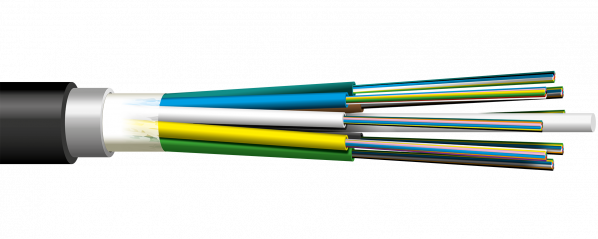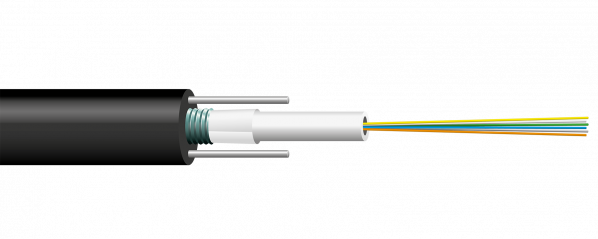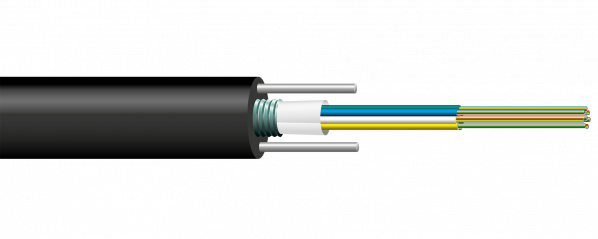Optical fibres are protected by cable constructions
Mon Apr 20 16:23:00 2020
The purpose of the cable construction is to protect the optical fibres from all kinds of stresses during manufacturing, storage, transport, installation and operation. The construction should secure and maintain the transmission characteristics of the optical fibres for the whole estimated lifetime of the cable. This may be 30 years or even more. In addition, the cable construction should be such that the cable is cost effective and easy to install.
There are three traditional basic core constructions of optical fibre cables:
- Stranded construction
- Central tube construction
- Slotted core construction
In addition to the three traditional basic constructions, there is also a more recently developed flexible loose tube construction.
Stranded construction
In the stranded construction secondary coated fibres or fibre bundles are stranded concentrically around the central element. It is common that the stranding changes periodically its direction (SZ). Stranded constructions can be divided into two basic types according to the type of the secondary coating: tight and loose stranded construction. The central element in the stranded construction also has the function of a strength member. The stranded construction represents a traditional and oldest optical fibre cable construction. This optical fibre cable construction is still generally in use.

Central tube construction
The central tube construction consists of one plastic tube containing primary coated fibres. The fibres are located loosely within the tube. The diameter of the tube is 5...10 mm. The fibres are grouped into bundles for identification and management of fibres. The central tube construction has very high crush strength. The sufficient tensile strength can be achieved with the strength member layer between the core and the sheath or with metallic or non-metallic wires within the sheath.

Flexible loose tube construction
The flexible loose tube construction combines the benefits of the stranded loose tube construction and the central loose tube construction. The fibres are within small tubes, which are made of very flexible material. The benefits of flexible loose tubes are very clear compared to the traditional loose tubes. Tubes have small diameter and they have significantly better resistance for kinking than traditional tubes. Stripping of tubes is easy without any tools, cleaning of fibres is also easy as the amount of jelly is minimizes and small size of tubes requires less space in closures. All this reduces the work and time needed for cable jointing, splicing and termination and increases the reliability of the network.

Slotted core construction
The slotted core construction consists of a plastic rod with longitudinal slots (or grooves). The slots passes around the core helically or changing periodically the direction (SZ). Primary coated fibres are located loosely in the slots. The slotted core construction has a very high crush strength and structural clarity for installation. The fibres are easily accessible for splicing and termination. The diameter of the slotted core is 6...12 mm depending on the fibre count. The strength member is located in the central axis of the slotted core.
Fibre optic cables have a construction based on one of the above mentioned. There are, however, great differences in constructional details, materials and dimensions. New cable constructions are also being developed all the time. Small and economical, yet sufficiently strong and durable cable constructions have been under active development during recent years. Good examples of these are microduct cables for duct installation and all dielectric self-supporting aerial cables. Also the installation characteristics of optical fibres are under continuous development. A result of such development are cables with very flexible loose tubes.
Learn more about our range of fibre optic cables!
This article is based on our book FTTX - Principles, Technologies and Installation Solutions. Read more about our books.
![[NAME]](https://www.nestorcables.com/media/layout/img/logot-ja-kuvat/nestor-cables-logo-white.png)

